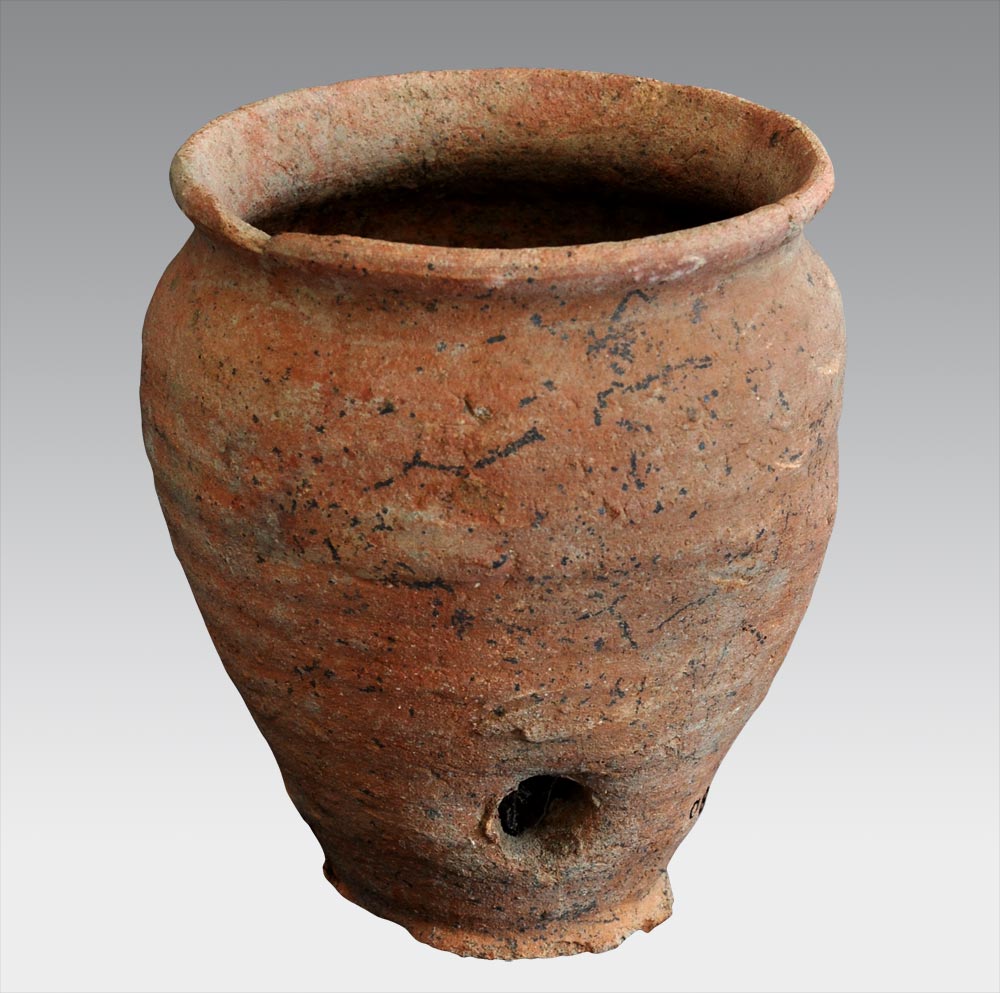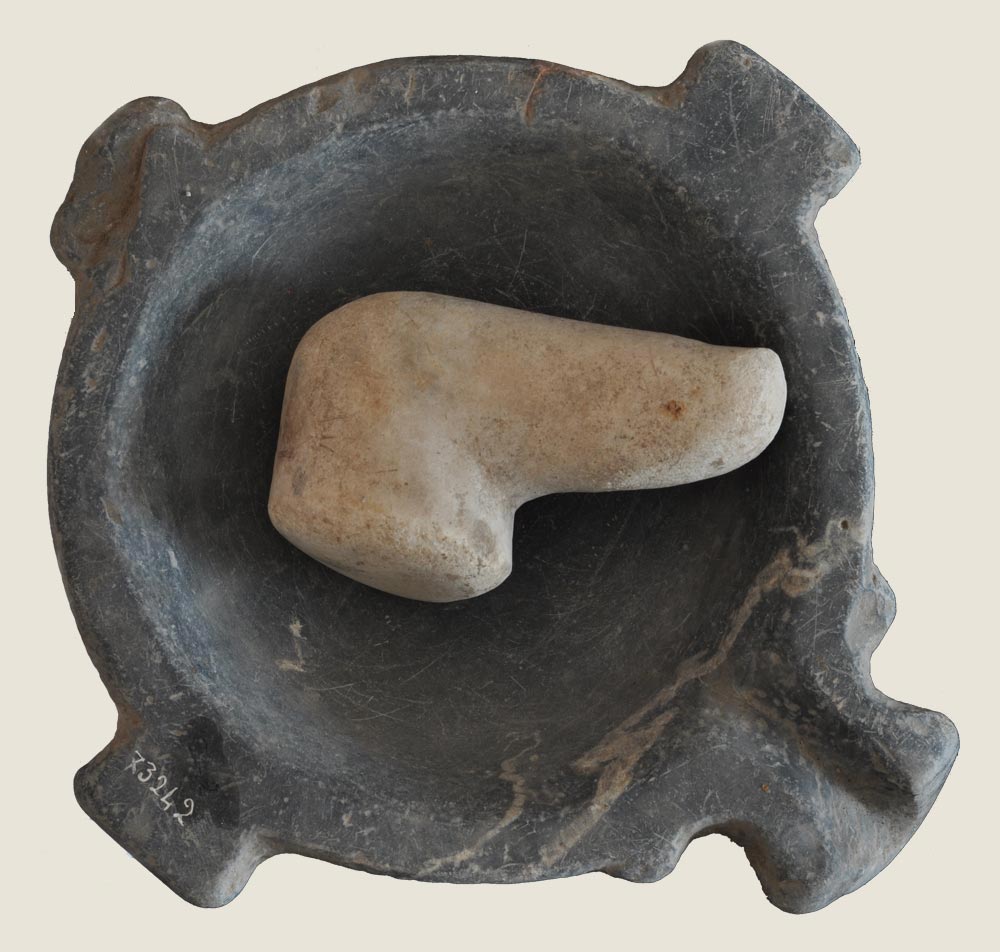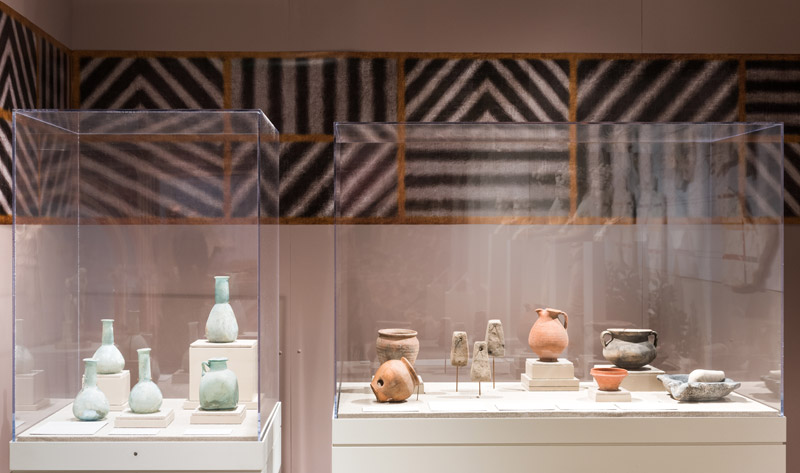Planting Pots (Ollae Perforatae)

Stone Mortar and Pestle in the Shape of a Thumb

Service Corridor

For the 3D experience, you may need to check WebGL support for your browser.
This digital display shows the long, wide corridor (46) that ran between the slaves’ courtyard and the swimming pool in the east wing. Its lower walls are decorated with “zebra stripes” like the ones found in the slaves’ courtyard.
xHousehold Objects

Glass, pottery, and stone objects
Pottery in the Roman world ranged from coarse and simple to fine and highly decorated. Simple pottery like the objects shown here would have been used by the slaves of the household for everyday purposes. Jugs were used to serve liquids on the table, where they might have been poured into red-gloss cups like the one here. For special occasions such as dinner parties, however, wealthy Romans like the owners of Villa A would have used silver or perhaps bronze serving vessels at the table. Cooking pots with rounded bottoms sat on stands above hot coals. The exterior of the pot here is blackened from cooking. The stone mortar and pestle would have been used to grind ingredients.
Glass
Glass-blowing technology came to Italy not long after Villa A was constructed in the second half of the first century BC. Blown glass was soon widespread and a rare luxury became a relatively common material. Glass was used to make vessels for a variety of purposes, from utilitarian to decorative. Colored glass was less valuable than colorless, transparent glass resembling rock crystal.
The contents of the bottles shown here may have been more expensive than the bottles themselves. Perfume bottles were used to store perfumed oil or unguents. When similar unguentaria were excavated from Oplontis B, they still contained residue of aromatic substances such as patchouli essential oil, rosemary- and floral-scented waxes, geranium-scented oil, mastic, and colophane. Slaves assisted wealthy Romans like the owners of Villa A with their personal grooming and might have used these bottles during that routine.
The square shape of the bottle with a handle would have allowed for efficient packing during shipping and storage. It may also have been used as a measuring device, since bottles of this type were manufactured in standard sizes.

